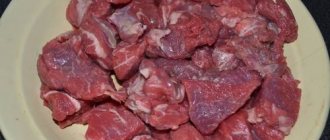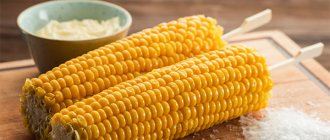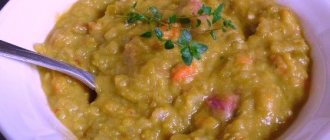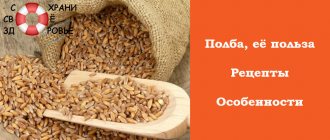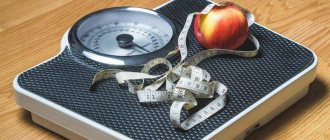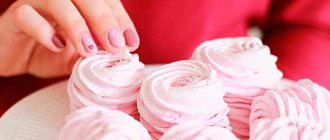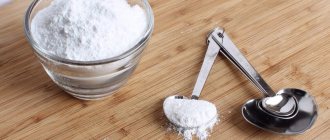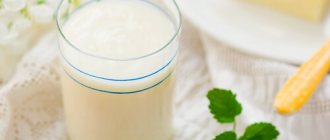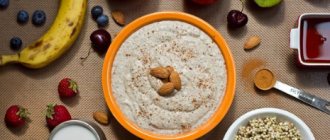Composition and calorie content
Beef tripe (offal) refers to meat by-products extracted from the stomach when cutting the carcass of an animal (cow or bull). Simply put, this is the section of the stomach where the initial processing of silage, hay, grass, etc. occurs.
The scar consists of smooth muscle fibers and resembles a bag in shape, the inner surface of which has a fleecy structure. It is the villi (growths) that secrete special enzymes for digesting food. The color of the inside of the bag is gray-pink-cream.
100 grams of tripe contains:
- water - 80.0 g;
- protein - 14.8 g;
- fat - 4.2 g;
- ash - 0.5 g.
Mineral elements:
- iron - 3.0 mg;
- potassium - 325.0 mg;
- calcium - 15.0 mg;
- magnesium - 14.0 mg;
- sodium - 65.0 mg;
- phosphorus - 84.0 mg;
- iodine - 7.0 mcg.
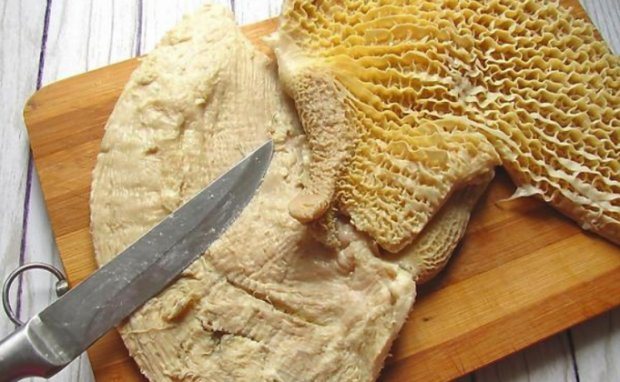
The calorie content of meat by-products is low and reaches 97 kcal per 100 grams. There are no carbohydrates, but a significant amount of protein and low fat content, the presence of vitamins and minerals, and antidepressants make beef tripe a healthy dietary dish.
Trip recipe. Calorie, chemical composition and nutritional value.
Nutritional value and chemical composition of tripe.
The table shows the nutritional content (calories, proteins, fats, carbohydrates, vitamins and minerals) per 100 grams of edible portion.
| Nutrient | Quantity | Norm** | % of the norm in 100 g | % of the norm in 100 kcal | 100% normal |
| Calorie content | 188.4 kcal | 1684 kcal | 11.2% | 5.9% | 894 g |
| Squirrels | 13.9 g | 76 g | 18.3% | 9.7% | 547 g |
| Fats | 13.1 g | 56 g | 23.4% | 12.4% | 427 g |
| Carbohydrates | 3.7 g | 219 g | 1.7% | 0.9% | 5919 g |
| Organic acids | 0.1 g | ~ | |||
| Alimentary fiber | 1.5 g | 20 g | 7.5% | 4% | 1333 g |
| Water | 72.5 g | 2273 g | 3.2% | 1.7% | 3135 g |
| Ash | 0.782 g | ~ | |||
| Vitamins | |||||
| Vitamin B1, thiamine | 0.047 mg | 1.5 mg | 3.1% | 1.6% | 3191 g |
| Vitamin B2, riboflavin | 0.127 mg | 1.8 mg | 7.1% | 3.8% | 1417 g |
| Vitamin B5, pantothenic | 0.05 mg | 5 mg | 1% | 0.5% | 10000 g |
| Vitamin B6, pyridoxine | 0.059 mg | 2 mg | 3% | 1.6% | 3390 g |
| Vitamin B9, folates | 4.455 mcg | 400 mcg | 1.1% | 0.6% | 8979 g |
| Vitamin C, ascorbic acid | 1.73 mg | 90 mg | 1.9% | 1% | 5202 g |
| Vitamin E, alpha tocopherol, TE | 4.455 mg | 15 mg | 29.7% | 15.8% | 337 g |
| Vitamin H, biotin | 0.446 mcg | 50 mcg | 0.9% | 0.5% | 11211 g |
| Vitamin RR, NE | 4.2642 mg | 20 mg | 21.3% | 11.3% | 469 g |
| Niacin | 1.347 mg | ~ | |||
| Macronutrients | |||||
| Potassium, K | 261.09 mg | 2500 mg | 10.4% | 5.5% | 958 g |
| Calcium, Ca | 26.92 mg | 1000 mg | 2.7% | 1.4% | 3715 g |
| Magnesium, Mg | 17.19 mg | 400 mg | 4.3% | 2.3% | 2327 g |
| Sodium, Na | 40.48 mg | 1300 mg | 3.1% | 1.6% | 3211 g |
| Sera, S | 178.71 mg | 1000 mg | 17.9% | 9.5% | 560 g |
| Phosphorus, Ph | 86.6 mg | 800 mg | 10.8% | 5.7% | 924 g |
| Chlorine, Cl | 12.38 mg | 2300 mg | 0.5% | 0.3% | 18578 g |
| Microelements | |||||
| Aluminium, Al | 198 mcg | ~ | |||
| Bor, B | 99 mcg | ~ | |||
| Iron, Fe | 2.764 mg | 18 mg | 15.4% | 8.2% | 651 g |
| Yod, I | 8.42 mcg | 150 mcg | 5.6% | 3% | 1781 |
| Cobalt, Co | 2.475 mcg | 10 mcg | 24.8% | 13.2% | 404 g |
| Manganese, Mn | 0.1139 mg | 2 mg | 5.7% | 3% | 1756 g |
| Copper, Cu | 44.55 mcg | 1000 mcg | 4.5% | 2.4% | 2245 g |
| Nickel, Ni | 1.485 mcg | ~ | |||
| Rubidium, Rb | 235.6 mcg | ~ | |||
| Fluorine, F | 15.35 mcg | 4000 mcg | 0.4% | 0.2% | 26059 g |
| Chromium, Cr | 0.99 mcg | 50 mcg | 2% | 1.1% | 5051 g |
| Zinc, Zn | 0.4208 mg | 12 mg | 3.5% | 1.9% | 2852 g |
| Digestible carbohydrates | |||||
| Starch and dextrins | 0.047 g | ~ | |||
| Mono- and disaccharides (sugars) | 3.8 g | max 100 g | |||
| Glucose (dextrose) | 0.644 g | ~ | |||
| Sucrose | 3.218 g | ~ | |||
| Fructose | 0.594 g | ~ | |||
| Essential amino acids | 0.142 g | ~ | |||
| Arginine* | 0.079 g | ~ | |||
| Valin | 0.012 g | ~ | |||
| Histidine* | 0.007 g | ~ | |||
| Isoleucine | 0.02 g | ~ | |||
| Leucine | 0.025 g | ~ | |||
| Lysine | 0.03 g | ~ | |||
| Methionine | 0.005 g | ~ | |||
| Methionine + Cysteine | 0.01 g | ~ | |||
| Threonine | 0.02 g | ~ | |||
| Tryptophan | 0.01 g | ~ | |||
| Phenylalanine | 0.02 g | ~ | |||
| Phenylalanine+Tyrosine | 0.035 g | ~ | |||
| Nonessential amino acids | 0.328 g | ~ | |||
| Alanin | 0.029 g | ~ | |||
| Aspartic acid | 0.035 g | ~ | |||
| Glycine | 0.02 g | ~ | |||
| Glutamic acid | 0.109 g | ~ | |||
| Proline | 0.015 g | ~ | |||
| Serin | 0.013 g | ~ | |||
| Tyrosine | 0.015 g | ~ | |||
| Cysteine | 0.006 g | ~ | |||
| Sterols (sterols) | |||||
| beta sitosterol | 19.802 mg | ~ | |||
| Saturated fatty acids | |||||
| Saturated fatty acids | 1.1 g | max 18.7 g | |||
| 16:0 Palmitinaya | 0.614 g | ~ | |||
| 18:0 Stearic | 0.406 g | ~ | |||
| 20:0 Arakhinovaya | 0.03 g | ~ | |||
| 22:0 Begenovaya | 0.069 g | ~ | |||
| Monounsaturated fatty acids | 2.356 g | min 16.8 g | 14% | 7.4% | |
| 18:1 Oleic (omega-9) | 2.347 g | ~ | |||
| Polyunsaturated fatty acids | 5.921 g | from 11.2 to 20.6 g | 52.9% | 28.1% | |
| 18:2 Linolevaya | 5.921 g | ~ |
The energy value of tripe is 188.4 kcal.
Primary Source: Created in the application by the user. Read more.
** This table shows the average levels of vitamins and minerals for an adult. If you want to know the norms taking into account your gender, age and other factors, then use the “My Healthy Diet” application.
Beneficial properties and harm
Beef tripe has the following beneficial properties:
- low-calorie offal can be used in diets, and low-budget ones;
- The dietary dish has no restrictions for patients with diabetes, as it does not change the blood glucose level. Possible use by patients with gout;
- Beef tripe has a positive effect on the skin and mucous membranes. This manifestation is due to the vitamins and minerals it contains;
- The product's antioxidants and other elements have a calming effect on the nervous system and have a positive effect on the digestive tract. Approved for use by patients with gastrointestinal diseases.

As you can see, the product will bring significant benefits, moreover, it is affordable and does not cause any harm to the body. We can only talk about the duration and complexity of preparing the finished product.
Not recommended if you have an individual intolerance to the offal or an allergy to its components. The modern population is little familiar with the positive properties of this product and does not know the rules for its preparation. We will recall them in the next section.
How to Cook Beef Tripe: Appetizer
To facilitate the process of preparing dishes with tripe, it is advisable to choose a ready-made, purified product in specialized stores.

If this is not possible, then:
- Turn the inside of the bag inside out, remove fat, mucus, film with a knife or brush, thoroughly rinse off the residue with water;
- soak for 3 hours in a solution of 3% vinegar to eliminate odor, then rinse;
- Rub the scar with coarse salt for 30 minutes, rinse with a weak solution of hydrogen peroxide and then with cold water.
Cooking tripe
Before proceeding directly to the culinary processing of tripe, it must be thoroughly cleaned. To do this, turn it inside out. Clean it as thoroughly as possible from the remnants of the gastric mucosa, which forms a kind of film. The fat from the tripe should be trimmed off completely and discarded. It is not used for cooking, because... has a distinct unpleasant odor. After this, rinse the tripe thoroughly under running water.
Read also: Reaction development simulator
To eliminate the specific odor, cleaned and washed tripe is soaked for three hours in a light pink solution of potassium permanganate or a weak solution of table vinegar (3%), after which it is thoroughly washed again under running cold water.
Take coarse salt and rub it into the surface of the tripe. Leave for half an hour and then rinse again. Now the tripe can be used for further culinary processing.
Place the tripe in a saucepan, add cold water and bring to a boil over high heat. The water is drained, the tripe is washed under running water, put back in the pan and filled with cold water. Bring to a boil. Skim off the foam and cook for five hours over low heat.
Half an hour before the end of cooking, add a few peas of black and allspice, a couple of bay leaves, and two medium onions to the pan. Salt to taste. Place the finished tripe on a plate and cool.
Benefits of beef tripe
The benefit of beef tripe lies in its composition: this product contains many vitamins, as well as some mineral salts. In addition, due to its low calorie content, this offal is excellent for dietary nutrition.
Of the most famous dishes based on beef tripe, it is worth noting khash - a Caucasian dish (included in Azerbaijani, Georgian and Armenian cuisines). In fact, it is a very rich and nutritious broth. By the way, in the Caucasus, khash is considered an ideal remedy for a hangover, so the benefits of beef tripe for this purpose are obvious.
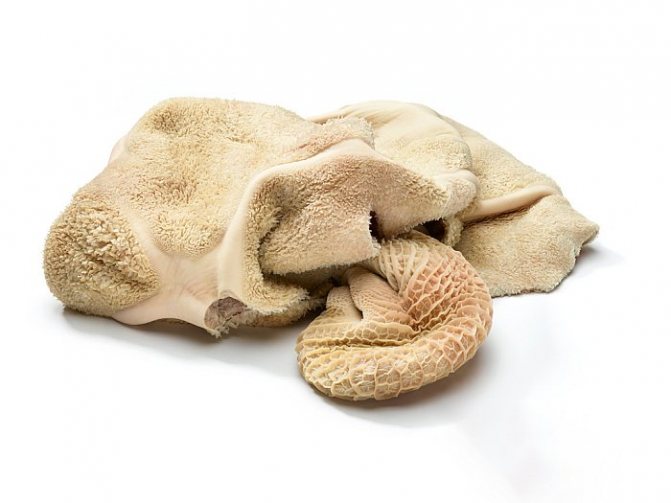
The tripe is the front part of the cow's stomach. However, quite often many people refer to all the internal organs of an animal as tripe. This fact must always be taken into account so that there is no confusion in the store during the purchase. Trip is a by-product and may have a second name: beef tripe.
The tripe consists mainly of muscle fibers. Cooked tripe has a dense consistency, yellow-grayish color, and a specific aroma and taste. Offal can be found on sale unprocessed and already fully prepared for cooking. When buying tripe, it is best to choose the second option, since you will have to tinker a lot with unprocessed offal. The process of preparing tripe can also be difficult. Therefore, even despite the low cost, this by-product is not particularly popular.
Offal - benefits and harms
The tripe is the front part of the cow's stomach. However, quite often many people refer to all the internal organs of an animal as tripe. This fact must always be taken into account so that there is no confusion in the store during the purchase. Trip is a by-product and may have a second name: beef tripe.
The tripe consists mainly of muscle fibers. Cooked tripe has a dense consistency, yellow-grayish color, and a specific aroma and taste. Offal can be found on sale unprocessed and already fully prepared for cooking. When buying tripe, it is best to choose the second option, since you will have to tinker a lot with unprocessed offal. The process of preparing tripe can also be difficult. Therefore, even despite the low cost, this by-product is not particularly popular.
Properties of tripe
Offal contains a fairly large amount of vitamins, among which vitamins B1, PP, B2, H, B12 are of particular value. In addition to vitamins, the offal contains various useful minerals, such as: iodine, zinc, copper, selenium, calcium, iron, magnesium, sulfur, potassium, phosphorus and some others. In addition to all this, the composition of tripe includes several essential substances that have antioxidant properties.
Carbohydrates are completely absent from tripe. Most of it is protein and very little fat. The ratio of proteins and fats is as follows: proteins -14.8 grams, fats - 4.2 grams. The calorie content of the offal is equal to 97 kilocalories. On average, the weight of one piece is about 1200 grams.
Useful properties of tripe
Many people mistakenly believe that tripe is an absolutely useless food product for the human body. But in reality this is far from the case. Trip contains 97% protein and 4.2% fat. But there are no carbohydrates in it. Therefore, dishes made from it do not lead to an increase in blood glucose levels and can be included in the menu of people suffering from diabetes.
The calorie content of 100.0 g of beef tripe is 97 kcal.
Other beneficial properties of tripe include its beneficial effect on the condition of the skin and mucous membranes, the digestive and nervous systems. They are explained by the B vitamins, macro- and microelements (calcium, magnesium, sodium, potassium, phosphorus, iron and iodine) contained in tripe. In addition, tripe contains substances that have antioxidant properties.
Video from YouTube on the topic of the article:
Benefits of tripe
Trip is not such a popular food product, so few people know about its beneficial properties. Due to the absence of carbohydrates, this by-product does not increase blood glucose and has a beneficial effect on patients with diabetes. Including tripe in your diet will immediately lead to an improvement in the nervous and digestive systems. The condition of the mucous membranes also improves. In addition, it has been proven that regular consumption of this by-product will improve your skin.
Offal is classified as a dietary product, so it can be safely included in the diet menu. Dishes made from tripe will perfectly diversify the dietary table, and the rich broth will quickly saturate the body, without harming the figure at all. After some research, it was found that tripe soup can lift your spirits, banish insomnia and relieve fatigue.
Use of tripe
The preparation of tripe must be approached skillfully, because improperly prepared offal has a specific repulsive odor and tastes like rubber. Before preparing any dish from tripe, it must be boiled, and the cooking time is very long, about five to six hours. After that, boiled tripe can be prepared in a variety of ways: frying, stewing, baking, making rolls from it, adding it to salads and soups.
Trip goes well with potatoes, pasta, rice, herbs, vegetables, many spices and some cereals. In the Caucasus, a special broth is prepared from tripe, which is called khash and is consumed not only as a regular dish, but is also used to combat hangovers. Offal is not very suitable for stuffing, but if you do it in a special way, you can prepare a unique dish called hagis.
You can check the readiness of the tripe with a knife; if it goes into it smoothly and easily, then the dish is completely ready. Dishes with tripe are usually served hot or warm. Trip rolls and cold appetizers are served straight from the refrigerator.
How to cook and how long to cook tripe
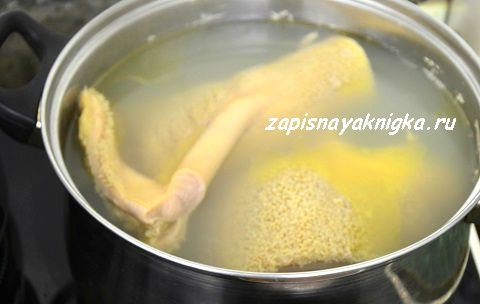
- Place the cleaned tripe in a saucepan, add water and cook for 3-4 hours, adding salt to the water; you can use a pressure cooker for this purpose. The tripe is considered overcooked if, when pierced with a fork, it does not spring back, and a piece of tripe is chewed well.
- After you have cooked the tripe or tripe, you can store it in the refrigerator for several days and reheat it by cutting it into pieces, layers, flaps, or coating it with spices, wrap the tripe in a roll and tie it with threads. You can cut the tripe roll after it has cooled in the refrigerator.
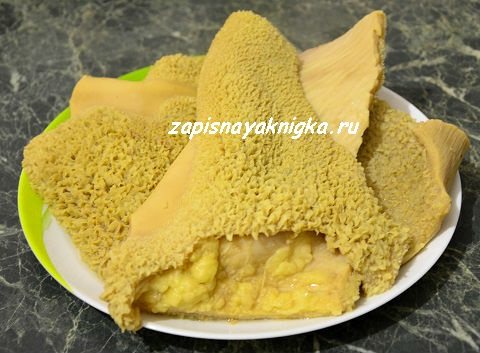
Recipes
Products and ingredients:
- beef legs – 150g
- peeled tripe – 225g
- garlic - 8g
- beef lard - 15g
- rennet - 50g
- milk - 30g
- wheat bread - 20g
Preparing the Hashi recipe:
Grind the kidney lard in a meat grinder and place in a cauldron along with beef legs, rennet and pieces of tripe. Wait until all the juice has evaporated, add boiling water and cook until the meat separates from the bones. Twenty minutes before turning off, throw in the bread soaked in milk. Remove bones. Add salt and garlic to the soup.
Beef leg and tripe hash
Products and ingredients:
- beef legs - 1.5 kg
- radish - 1 pc.
- parsley, basil, tarragon - to taste.
- tripe - 500g
- garlic - 2-3 heads
Preparing the recipe for Khash from beef legs and tripe:
Chop the beef legs and start cooking over the fire. Separately, you need to boil the tripe, chop it and put it in a pan with the meat. Khash can be considered ready when the meat separates freely from the bones. Herbs and spices are used for decoration.
